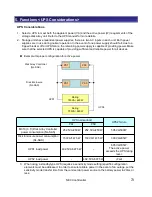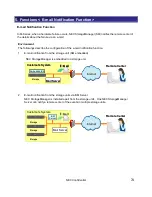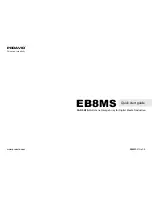
5. Functions <Hot Spare Disk (1)>
(1) Hot Spare Disk
Binding the hot spare disk enables automatic restoration of data when a disk failure occurs, without
having to wait for a maintenance service agent. Data redundancy is restored when the data copy to
the hot spare disk is complete.
• Binding of hot spare disk(s) is strongly recommended in order to enhance the availability of disk array
unit.
• The unit has a global hot spare function which enables hot spare disks to be used in any RAID group.
Note that SSD hot spare is only good with SSDs. SSD cannot be used as a hot spare with HDDs.
Likewise, HDD cannot be used as a hot spare with SSDs.
• A pool cannot consist of a mix which includes encrypted and unencrypted HDDs. Encrypted HDDs
also cannot be used as hot spares for unencrypted HDDs.
• A hot spare disk protects disk drives with the following characteristics.
- The same interface as hot spare disk
- The same amount of capacity or less as hot spare disk
- The same speed of rotations or less as hot spare disk
• When there are disks with various capacities and rotation speeds within the disk array unit, it is
recommended to have hot spare disks for each disk with the same capacity and the same rotation
speed to make management easier. (Note that SAS and NL-SAS are different interfaces.)
RAID-5
Failure
Hot spare disk
<Example>
Failure
2.5” 10krpm SAS 600GB RAID
2.5” 10krpm
SAS 1.2TB
Usable
Unusable
Unusable
3.5” SAS SSD
400GB
<Example>
2.5” 15krpm
SAS 600GB
Usable
2.5”
Encrypted
HDD
Unusable
3.5” 7.2krpm
NL-SAS 2TB/1TB
• When hot spare disks consists of multiple drive types, the priority is as follows.
1. The same interface, capacity, and rotation speed as the base disk drive*.
2. The same interface and capacity, but higher speed than the base disk drive*. When multiple
speeds of hot spare disks exist, the slowest disk is used first.
3. The same interface, but larger capacity than the base disk drive*. When multiple sizes of hot
spare disks exist, the smaller disk is used first.
* Base disk drive = disk drive with the smallest capacity/slowest rotation speed in the pool.
59
NEC Confidential
















































